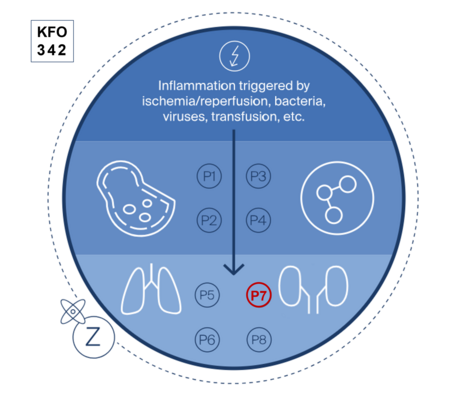Molecular renal mechanisms of ischemic preconditioning
Acute kidney injury (AKI) is a common clinical complication associated with high mortality and currently lacks specific therapeutic options. Within the framework of the Clinical Research UnitCRU 342 “Organ Dysfunction During Systemic Inflammation Syndromes” (DFG project number 414847370) ), and in collaboration with Prof. Dr. M. Meersch (Department of Anesthesiology, Intensive Care, and Pain Medicine), our project"The effects of DAMPs and remote ischemic preconditioning on the prevention of acute kidney failure (P7)" die renalen Schutzmechanismen nach einer ischämischen Präkonditionierung.
investigates renal protective mechanisms following ischemic preconditioning.
Ischemic preconditioning involves repeated interruption of blood flow to the arm using a blood pressure cuff, interspersed with reperfusion phases. This method is known as remote ischemic preconditioning (RIPC).
Clinical research from the Department of Anesthesiology has shown that RIPC can reduce the incidence of AKI in certain high-risk groups (A. Zarbock et al., JAMA, 2015). We aim to understand the molecular mechanisms by which muscle-derived proteins protect the kidney.
One hypothesis is that HMGB1, released from muscle during RIPC, protects renal tubules by inducing a cell cycle arrest. Using molecular and cell biology techniques, we aim to clarify how RIPC influences cellular signaling across different microdissected tubular segments of the kidney during acute kidney injury.


